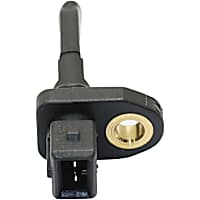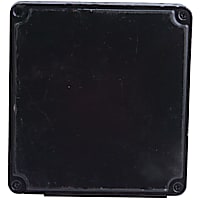Modern vehicles are equipped with several engine sensors that play crucial roles in their operation. Just like any other car component, these sensors may malfunction over time due to various reasons. Thankfully, vehicles are equipped with on-board diagnostic (OBD) systems to help you or a mechanic identify possible issues in your vehicle, including faulty sensors.
OBD-II code P0097 is related to a possible fault in one of your vehicle’s intake air temperature (IAT) sensors. Here is some helpful information about it.
What Does the P0097 Code Mean?
Diagnostic Trouble Code (DTC) P0097 stands for “IAT Sensor 2 Circuit Low (Bank 1).” It is triggered when your vehicle’s powertrain control module (PCM) perceives an irregularity in the intake air temperature #2 readings.
To be specific, this code may be logged once the PCM detects that the air temperature reading in sensor #2 is unusually high (causing low voltage resistance) when the engine temperature is low. Bank 1 refers to the side of the engine that contains the #1 cylinder.

In order to fully understand this code, let’s discuss the basics of an intake air temperature sensor. This device is used to monitor the temperature of the air that enters the engine. It measures air temperature with the help of an internal thermistor or a thermometer that sends voltage signals to the PCM.
When the air temperature is cold, the resistance in the thermistor should be high. However, when the air is warm, the resistance should proportionally decrease. This data is used by the PCM to determine the temperature of incoming air.
Once the PCM detects an air temperature reading that’s unusually high (which means low resistance) when the engine temperature is unusually low, it will trigger the error code.
Read our advanced technical discussion about the intake air temperature sensor and how it can cause OBD codes like P0097 to appear for more information that can help you resolve the issue.
Note: The definition of code P0097 may be different depending on the vehicle manufacturer. Consult the appropriate repair manual or repair database for the exact code definition.

What are the Possible Causes of the P0097 Code?
Here are the possible triggers of this error code:
- A failed IAT sensor #2
- Unreasonably high intake air temperatures
- Circuit issues, such as damaged wires or poor connections
- Malfunctioning PCM
What are the Common Symptoms of a P0097 Code?
Here are the common symptoms related to the code:
- Illuminated check engine light
- Engine performance problems, such as rough running and hesitation
- Reduced fuel economy
In most cases, there won’t be any noticeable symptom other than an illuminated check engine light.
How to Diagnose the P0097 Code
It’s difficult to diagnose a P0097 code. If you’re not a seasoned automotive DIYer, it is best to take your vehicle to an auto repair shop. A mechanic would know how to diagnose the problem and rule out any other issue that may cause it.

However, if you’re a seasoned DIYer and you prefer to diagnose the problem yourself, we recommend consulting repair manuals and online databases. Consult vehicle-specific resources. These manuals will most likely contain helpful information on the diagnostic steps that may work for your specific make and model.
How to Fix the P0097 Code
There’s no solution that would work for all vehicles. This is because vehicle engines may be made and structured differently per vehicle manufacturer. For example, the repair and diagnostic steps for a P0097 on a Ford may not work for a P0097 on a Chevrolet.
You may consult vehicle-specific repair manuals to help you identify the repair procedures that may work for your vehicle. You may also subscribe to an online repair database for more helpful information.
Where to Get a New Intake Air Temperature Sensor to Fix DTC P0097
There’s a good chance that a bad intake air temperature sensor is what caused the PCM to log code P0097. If that’s the case, don’t delay replacing it. Otherwise, its symptoms could get worse and even affect other parts, causing the PCM to log other codes.
On the bright side, getting a replacement shouldn’t be too difficult with the help of CarParts.com. You can expect fast shipping and affordable prices, all without having to take one step outside your door.
All you need is a mobile phone or a computer. To get started, visit our website and use our vehicle selector to check out the sensors that fit your ride. Then, use the filters to narrow down the results to the parts that match the brand, price, and features you prefer.
If you have any questions, don’t hesitate to contact our round-the-clock customer service representatives. They’re always happy to help.
Check out our catalog and order what you need today!
Products Mentioned in this Guide
Any information provided on this Website is for informational purposes only and is not intended to replace consultation with a professional mechanic. The accuracy and timeliness of the information may change from the time of publication.


 IAT Sensor
IAT Sensor
 Engine Control Module
Engine Control Module


















